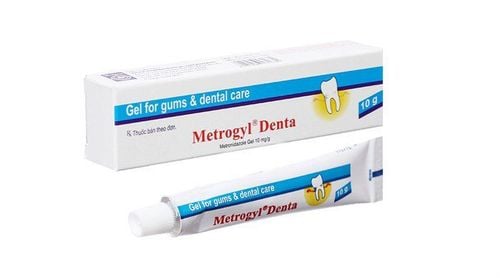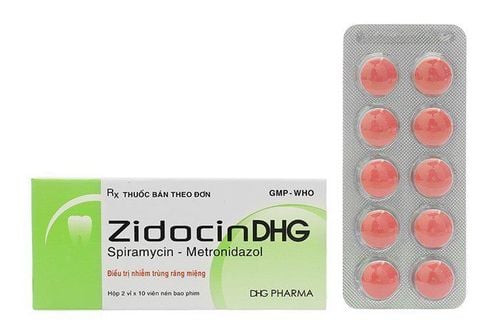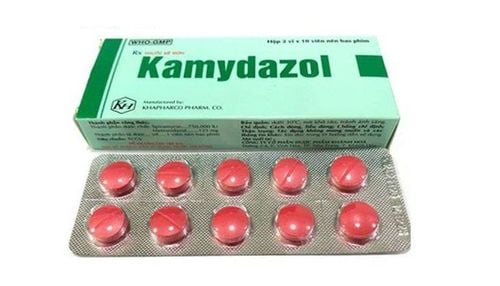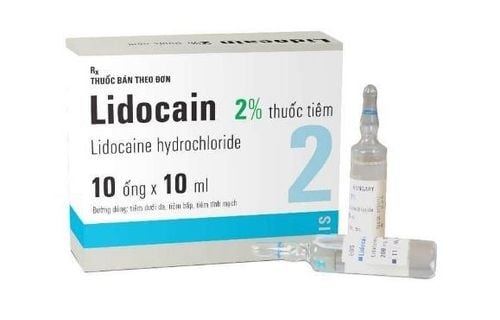This is an automatically translated article.
Oracortia belongs to the group of anti-inflammatory drugs, used to treat canker sores. Let's learn about the uses and dosage of Oracortia through the article below.
1. What is Oracortia?
Oracortia oral medicine is made in the form of ointment for topical application on the skin and oral mucosa, with the main ingredient being Triamcinolone Acetonide with 0.1% content and other excipients such as Sodium Carboxymethylcellulose, gelatin, pectin, menthol, and menthol. , hydrocarbon gels. Triamcinolone Acetonide is a synthetic glucocorticoid containing fluorine, which works to slow down the progression, prevent the spread of inflammatory reactions such as burning pain, swelling or blistering. Therefore, the drug is often used to relieve burning pain in cases of canker sores, gingivitis, gingivitis, oral ulcers, to eliminate discomfort when eating or speaking caused by lesions in the oral cavity. In addition, the drug can also be used in the treatment of other ulcerative lesions caused by trauma.
2. Indications of Oracortia
Oracortia is used for the adjuvant treatment of temporary relief of symptoms of oral infections or traumatic ulcerative lesions.
Do not use Oracortia in the following cases:
People who are sensitive to Triamcinolone Acetonide or any of its ingredients. People with fungal infections, herpes or acne. The drug is easily absorbed even when applied to the skin, so it should be used sparingly in case of widespread lesions or prolonged use of high doses. Extreme caution should be exercised when Oracortia is used by pregnant or lactating women. Do not use this medicine for children under 1 year old without a doctor's prescription.
3. Dosage and how to use Oracortia
How to use Oracortia oral medicine as follows:
Gargle with filtered water or brush your teeth to clean the oral cavity before applying the medicine. Using a clean cotton swab, take an appropriate amount of the drug, apply it to the damaged skin to create a thin film. When applying, do not rub vigorously because it can cause pain or damage more widely. Should take the drug after meals or before going to bed so that the medicine stays in contact with the affected area longer, avoiding the drug being washed away by food. Apply 1-2 times a day. If mouth sores are severe, the dose can be increased to 3 times a day, after meals. Whether oracortia can be swallowed is a matter of concern for many patients. The drug has a fairly good ability to absorb, so patients should not swallow the drug or use a bandage to tightly wrap the injured area because it can increase the ability to absorb the drug into the blood and cause systemic effects. If accidentally swallowed the drug, the patient should drink plenty of water, then go to the nearest medical facility for advice. In case of damage in the fold area, prone to friction, you can wrap the bandage and consult your doctor about adjusting the appropriate dose of the drug.
4. Oracortia side effects
When using Oracortia oral medicine, some unwanted effects may occur:
Skin thinning, skin atrophy, stretch marks or red rash, especially in areas with many folds. Edema due to water retention. High blood pressure, high blood sugar. Headache, musculoskeletal pain, osteoporosis, hirsutism. Peptic ulcer . Cataracts, glaucoma. Wounds heal slowly or spread more widely. Menstrual disorders in women. Cushing's syndrome. When using Oracortia, if the patient experiences any serious side effects, stop using the drug, immediately contact a doctor or go to a medical facility for advice and timely treatment.
5. Interactions with Oracortia drugs
Oracortia oral medicine is applied topically, so it has little interaction with other drugs when used in combination. However, concomitant use with some of the following drugs may increase the risk of side effects:
Co-administration with corticosteroids or other immunosuppressive drugs may cause excessive immunosuppression. Concomitant use with pain relievers, non-steroidal anti-inflammatory drugs (NSAIDS) or drinking alcohol while taking them will increase the risk of peptic ulcers. Triamcinolone has an antagonistic effect on antihypertensive drugs, hypoglycemic drugs, diuretics. Therefore, when used in combination can reduce the effectiveness of these drugs. Concomitant use with anticoagulants Warfarin may increase the effect of anticoagulants, increasing the risk of bleeding.
6. Notes and cautions when using Oracortia
When using Oracortia medicine, it should be noted in the following cases:
Long-term use of the drug in high doses can lead to immunosuppression, making ulcers heal longer.. Clean hands with soap and water. soap before applying the medicine. After use, close the vial cap tightly. If the drug shows signs of change or physical changes, stop using that tube immediately. Oracortia does not cause side effects on the central nervous system, so it does not affect the ability to concentrate or operate machines. During the treatment of canker sores, patients also need to adjust their diet accordingly, such as eating soft foods, limiting hard foods or hot spicy foods because they are easy to aggravate. To date, there are no adequate research data on teratogenic effects or effects on the fetus when using topical corticosteroids in pregnant women. However, the risk of harm to mother and baby cannot be ruled out. Therefore, Oracortia should only be used in pregnant women when the benefits of treatment against the possible risks have been carefully weighed in full consultation with the doctor. The drug should be used at the lowest effective dose and for the shortest duration. Oracortia should not be used during the first 3 months of pregnancy. In addition to the above information, if you have any questions about Oracortia, you can contact your doctor for advice and answers.
Please dial HOTLINE for more information or register for an appointment HERE. Download MyVinmec app to make appointments faster and to manage your bookings easily.













